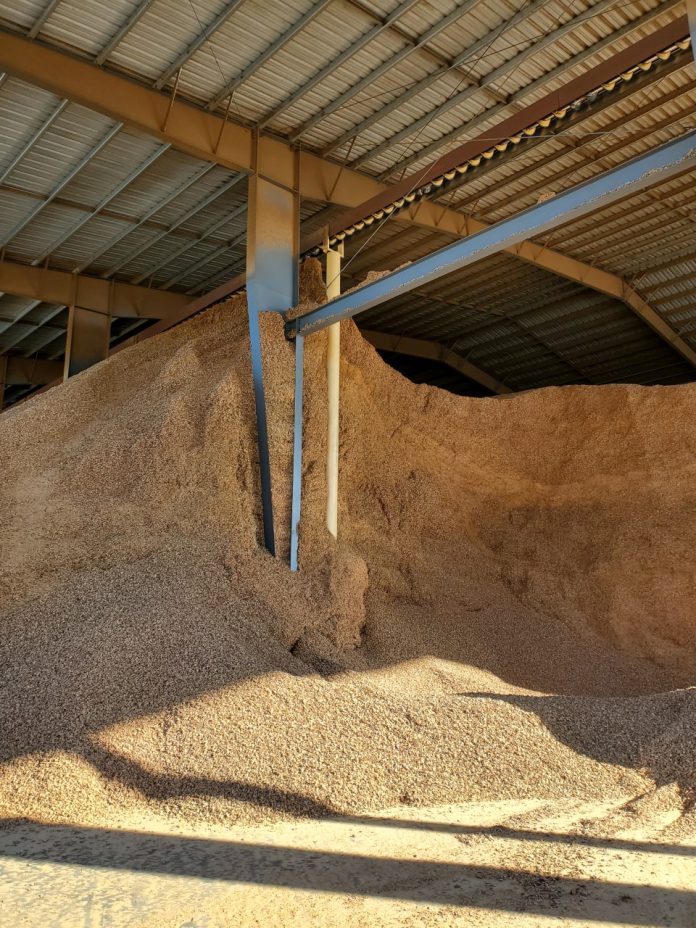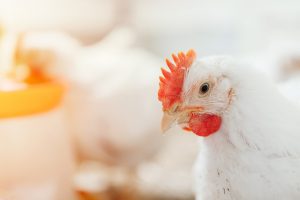
Value and demand for almond co-products appears to be on the rise with food ingredients, livestock and poultry feed products, and biomass use leading the way.
Two of the most promising food ingredient applications had a debut at the Almond Conference and drew favorable reviews, said Josette Lewis, chief scientific officer at Almond Board of California. A food development company, Mattson Co., brought a nutrition bar containing almond hulls and a coffee beverage containing roasted almond hulls. Both were offered for taste testing at the conference and were well received, Lewis said.
The nutrition bar created by Mattson contains 39% of an adult’s daily fiber requirement and supplies half of the effective carbohydrates in a diet. Adding the almond hulls reduces the calories by 30%, Lewis said.
“And they taste good,” Mattson’s Madison Gurrola said, noting the bar matched the Clif bar in fat and protein, but added five grams of fiber. Almond hulls were 15.25% of the total formula.
Gurrola said in her conference presentation that the first step in the development process was evaluating the hull material for nutritional, hedonic and functional properties. Test evaluations included bulk density, water absorption, and nixtamalization, a process that attempts to make hulls softer by breaking down fibers. That process was not effective, she noted.
Hull uses identified as the best opportunities for use as food ingredients were in baked goods to enhance the nutritional appeal with added fiber and to reduce costs, nutrition bars for inexpensive fiber and as a bulking agent in ground coffee, replacing up to 10% to 20% percent of coffee beans. Mattson’s testing showed that hulls reduced coffee bitterness. Roasting the hulls also provides a kill step.
Partially replacing ground coffee beans with roasted almond hull powder yielded positive results and a good sensory experience with complex flavor, Gurrola said. The roasted hull powder could also be used to make a non-caffeine beverage at a lower price than coffee.
Use of almond hull powder in bread, the largest segment in baked goods, resulted in a darker-colored product. Gurrola said they also found the powder inhibited gluten development. They concluded hull powder may be better suited for cookies, crackers or pancake mixes.
Other almond hull uses explored by Mattson included use as an emulsifier or thickening agent. Almond hulls could possibly be used as an egg replacer in baked goods or as a cost-reducing additive in processed foods.
Lewis said the potential volume of hulls used as food ingredients will depend on the number and types of food product uses and could range from 300,000 pounds per year for one product such as a nutritional or snack bar to two million pounds per year for multiple products using hulls. Lewis noted the volume is a very preliminary analysis.
For use in a food product, hulls will need further processing. The cost and whether it is done by the processor or the food company or another intermediary would be determined by the product development plans, Lewis said. There are examples of ag waste being diverted to food ingredients such as apple peels and wine grape pomace. In those cases, additional processing has been done by an intermediary of the food company.
Lewis said that almond processors or hullers and shellers are not being asked to eat into their profits to do additional processing. Use of hulls as a food ingredient will only happen commercially if it is financially feasible for both the processor and food company. Right now, she added, it is feasible for hulls to compete as an ingredient with additional processing.
Poultry, Livestock Feed Opportunities
Almond hulls have been part of total mixed rations on dairies for many years with research funded by ABC and Biomass Workgroup finding hulls could be fed at a rate of 12 pounds per day per head, replacing some flaked corn and silage. Research is also showing new markets in beef cattle and poultry rations.
A limiting factor in use of hulls in beef cattle feeding is transportation as most cattle feeding operations are located in the mid-west. Research at Kansas State University did suggest that hulls can be considered as an alternative to prairie hay in limit fed growing diets without reducing growth performance or feed efficiency.
The market for hulls in poultry feed has potential due to the location of many broiler and egg operations near almond production areas.
In an ABC funded study, researchers from University of Georgia in Athens concluded that the fermentable sugar, dietary fiber and polyphenols in almond hulls make them a good alternate ingredient in broiler diets. Supplementation of almond hulls at 2.5% and 5% increased body weight gains and feed conversion ratio. They concluded hulls are feasible to reduce feed costs. In addition, meat quality was not affected, and fiber helped reduce body fat.
Bio-Industrial Manufacturing
Abundance of feedstock coupled with local opportunities are driving an initiative in the northern San Joaquin Valley. Karen Warner, CEO of the BioEconomy, Agriculture and Manufacturing (BEAM) initiative, is hoping to drive scale-up of bio-based products. The BEAM initiative came from the economic development organization Opportunity Stanislaus and counts Almond Board as one of its cross-sector partners.

Warner said work is being done to attract a broad range of bioproduct firms.
Two companies, Corigin and Aemetis, have announced plans for almond co-product use. Aemetis plans to produce aviation fuel at a Riverbank facility. According to their website, they have signed agreements to secure 130,000 tons of wood waste per year to use at the facility. Corigin has plans to use orchard waste and shells to make biochar for use as a soil amendment. JATCO, a Stanislaus County plastics manufacturing company and part of the BEAM innovation leadership council, has been exploring integration of almond co-products into its materials.
Ecostrat CEO Jordan Solomon, a speaker at the conference, explained how BDO Zone ratings can help drive new almond biomass-based market development in California. A BDO Zone rating is a standards-based assessment of biomass feedstock and infrastructure properties of a region for development potential of new biofuel, renewable chemical, biogas or bioproduct manufacturing plants.
Solomon said almond biomass presents ideal technical specs for many biofuel, renewable chemical and RNG applications. In addition, feedstock cost in California is lower than in the southeastern U.S. Biofuel and renewable chemical producers are able to pay more for biomass feedstock, Solmon said, than former wood to electricity producers.










